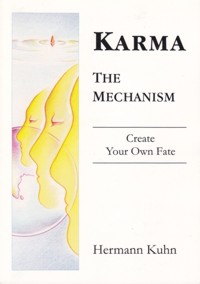immediately precedes ultimate freedom. Here we separate our consciousness from our last remaining karmic bonds. We liberate ourselves from status, emotions, body and limiting time and thereby dissolve all restrictive connections to the non-living elements (ajiva dravyas). We leave the fetters of the entire strata of bodily existence to regain full command of our greater, majestic self, - immensely enriched by our experiences in the restricted, separated circumstances we voluntarily and consciously subjected ourselves to.
The moment we reach ultimate freedom we again assume what was never really lost to us, - pure unrestricted consciousness. We now fully experience our inherent nature - unlimited cognition, unlimited love, unlimited knowledge, unlimited energy and timeless bliss.
Each higher stage brings about a substantial acceleration of development and our ability to comprehend. This acceleration can be compared to the mechanism of an e-curve, which after a long, drawn-out starting-phase with only few small changes, rapidly increases in dynamic to reach the final state only a short time later.
Though we may spend long time in gunasthana one and four, we should not infer that higher stages require an equal amount of time for their unfoldment. From the fifth gunasthana onwards we experience an unprecedented acceleration of our development we cannot even imagine in the preceding stages.
This acceleration is further supported by the fact that entire groups of karmas that are active only on a lower stage, automatically fall off once we stabilize our consciousness on a higher level. The broader and more comprehensive understanding of the new level automatically dissolves our emotional attachment to these themes of life (karmas), which then dissipate without manifesting much of an effect.
Though this may sound like magic, it is nothing other than what we experience while growing up. Tasks that needed all our energy and attention when we were in the playing pen - like setting wooden blocks on top of each other - cease to occupy our attention as soon as we grow out of them. Though we could build far better towers now, we never even think of doing so.
We can use this very mechanism to accelerate our development significantly. If - instead of 'battling' annoying and limiting themes of life on our current level - we shift our attention to higher stages, these themes will dissipate in a similar way as they did in the playing pen.
This description is a brief overview. The characteristics, mechanisms and inner logic of the gunasthanas are far more extensive and complex than can be covered in this book. For deeper understanding it is recommended to read Gommatasara - Jiva Kanda and Karma Kanda.
One word regarding the classification of our own presently active stage of development:
It is safe to assume that almost everyone who reads these lines for the first time spends most of his time in the first level(mithyaktva). Yet an interest in the theme of this book indicates that our mind is already searching for opportunities to leave this stage of perpetual delusion.
A realistic evaluation of our own position - without self-deception - is one of the few essentials of a successful journey to far more fascinating levels of existence.
14 - The fourteenth gunasthana (ayoga kevali)
 Hermann Kuhn
Hermann Kuhn
